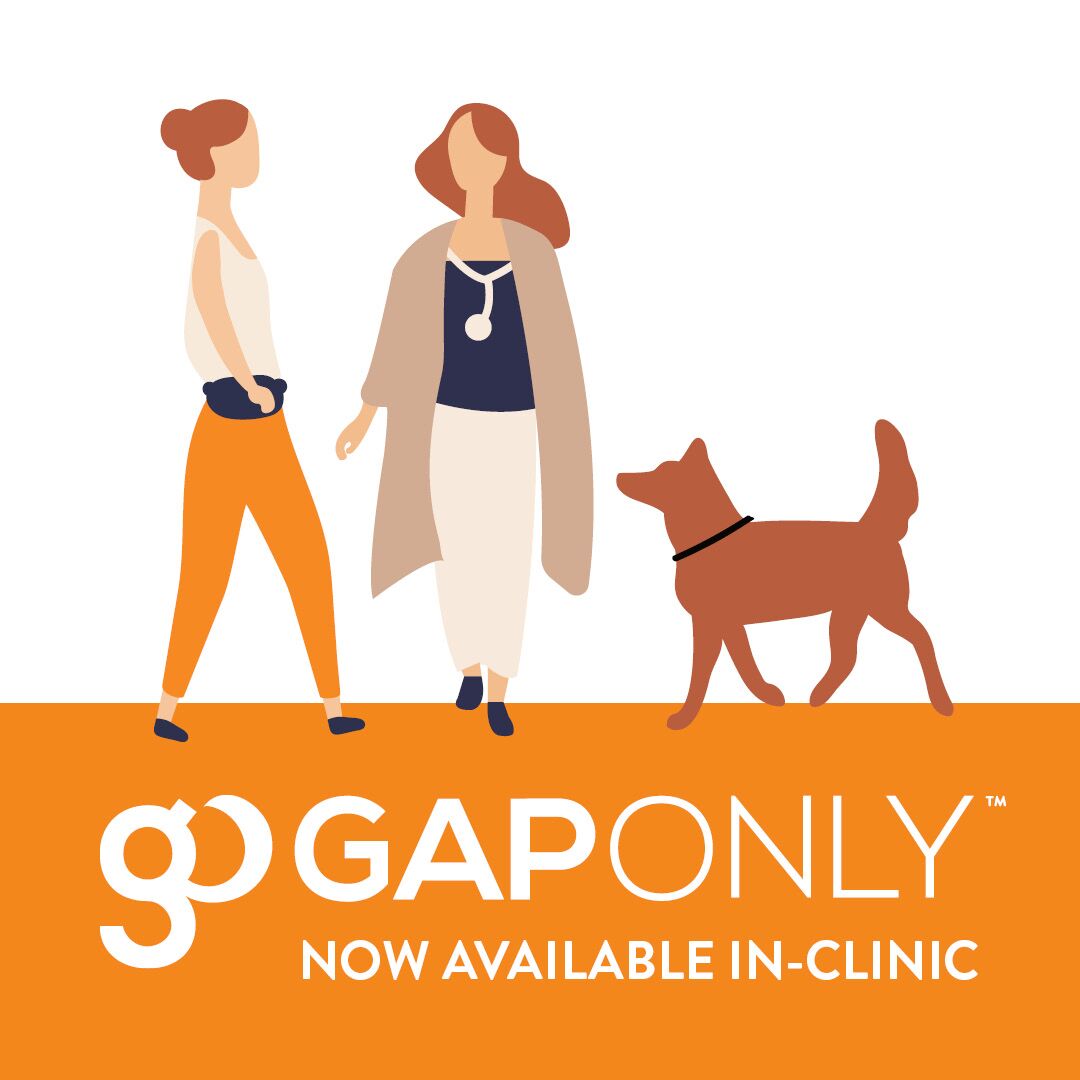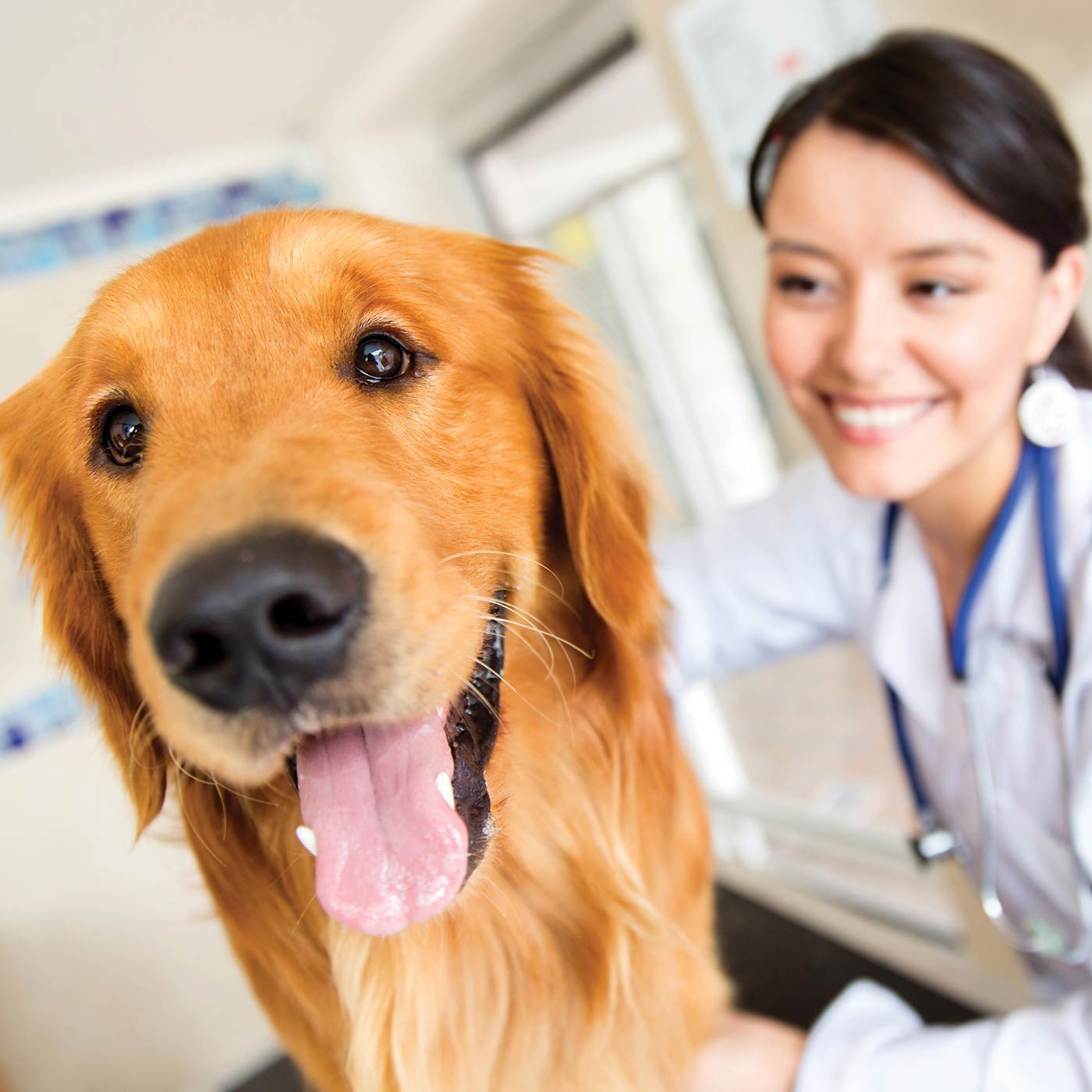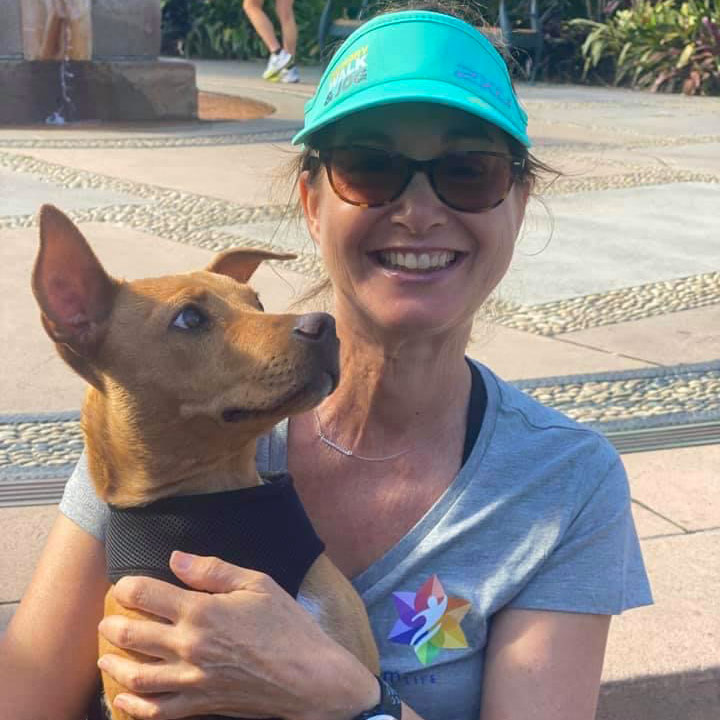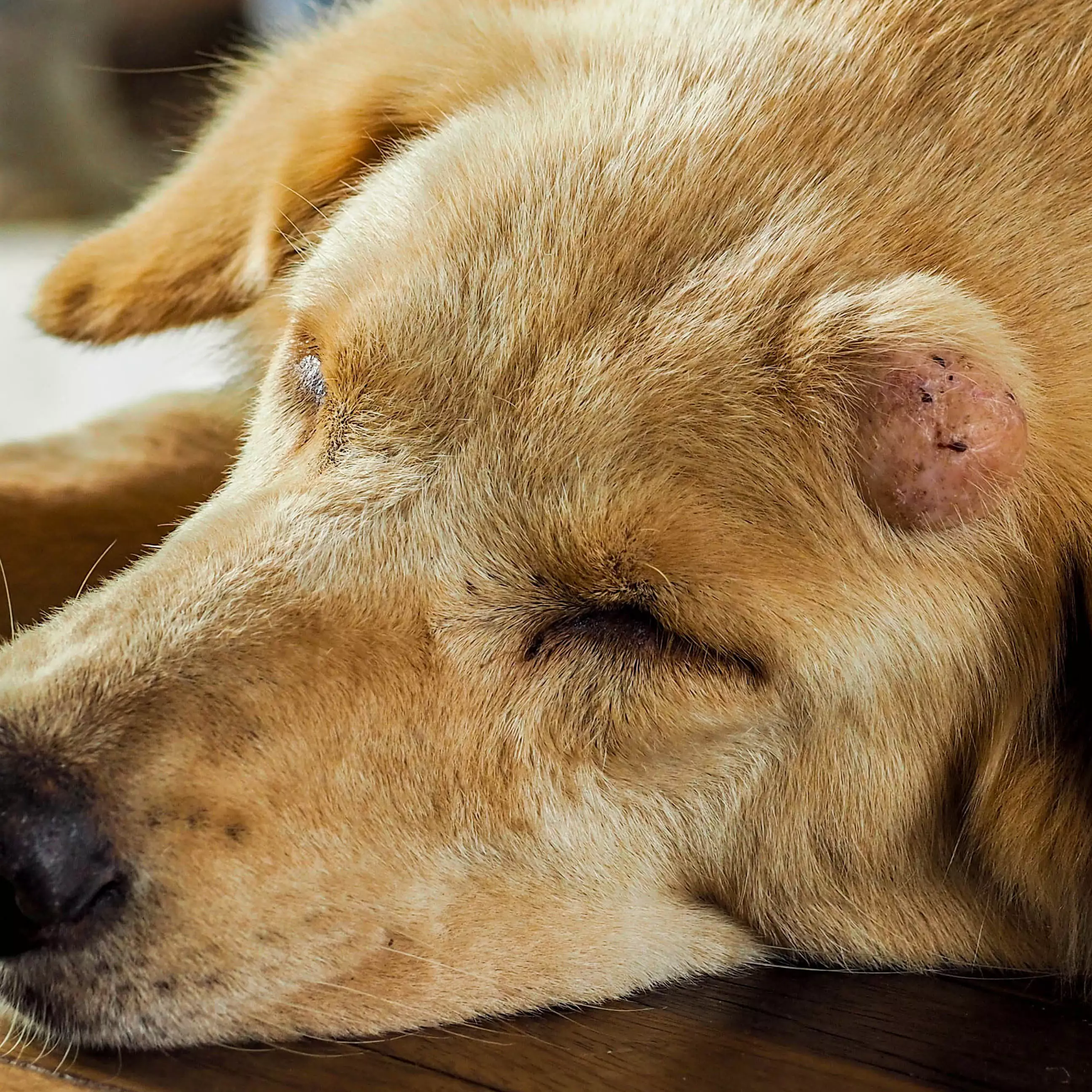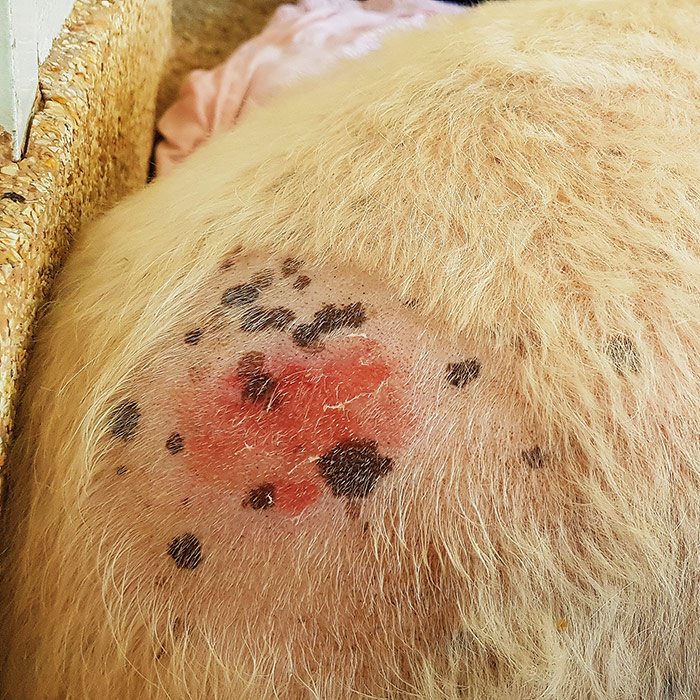Dog cancer signs, symptoms and treatment every owner should know
Importance of awareness about cancer in dogs
Just like humans, dogs may experience the heartbreaking diagnosis of cancer – a disease characterised by uncontrolled abnormal cell growth.
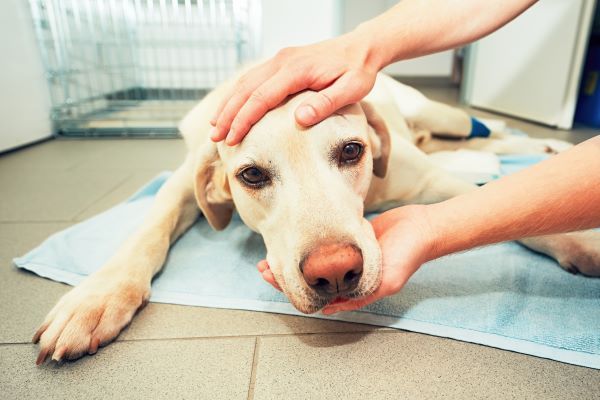
Whether your dog already has cancer, or you’re worried about their risk, it’s important to arm yourself with knowledge of the early warning signs, the importance of early detection and types of treatment. While a cancer diagnosis can be devastating, there may be several options available for treating your beloved pooch.
Common types of cancer in dogs
 As is the case with cancer in humans, some types of cancer are more common in pets than others.
As is the case with cancer in humans, some types of cancer are more common in pets than others.
Mast cell tumour and lymphoma were the most common cancer types for dogs in both 2022 and 2023 (Petsure claims data). Other common cancer types facing pets may include carcinoma, sarcoma and osteosarcoma (bone cancer), and melanoma.
Less common types of cancers affecting dogs include soft tissue sarcoma, squamous cell carcinoma and hemangiosarcoma.
Skin cancers in dogs
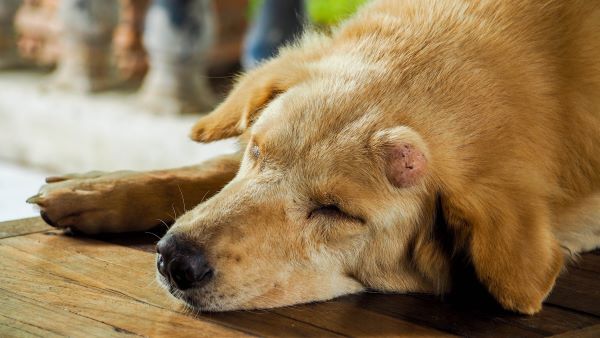
Skin cancer is a significant health concern that can affect dogs of any age, breed, or gender. However, light-coloured dogs or those with thin or no fur are particularly susceptible to sun-induced skin damage. The most common types of cancer that can affect the skin include squamous cell carcinoma, melanoma, and mast cell tumours.
Mast cell tumours
Mast cell tumours often manifest as lumps or bumps on the skin that may change in size or appearance over time. They form when the mast cells in the skin proliferate uncontrollably and accumulate in clusters. Mast cell tumours often appear small and insignificant, and many are benign, but they can be very serious and even life threatening.
Around fifty percent of mast cell tumours are malignant, and without treatment they will progressively worsen and spread to lymph nodes, the spleen, and the liver.
Learn more about mast cell tumours in dogs.
Squamous cell carcinoma
Squamous cell carcinoma is a malignant tumour in the epidermal cells of the skin. It often appears as firm, raised, or ulcerated masses on areas of skin exposed to sunlight, such as the ears, nose, and eyelids. It can also affect the paw pads and nail bed, particularly in dogs that spend a lot of time outdoors.
Learn more about squamous cell carcinoma in dogs.
Melanoma
Melanoma originates from pigment-producing cells called melanocytes that can also occur anywhere on the skin and can affect the eyes, oral cavity and nail bed. These tumours can be pigmented or non-pigmented and may appear as darkly coloured masses or flat lesions.
Causes and risk factors
Cancer is a complex process that may be caused by the interaction of multiple factors, including age and hereditary, environmental, and nutritional factors. Studies show that cancer in dogs is common, with one in four expected to get cancer during their lifetime. While dogs at any age may develop cancer, the risk increases as they approach their senior years. There are also certain breeds that have a greater risk of developing cancer.
Age
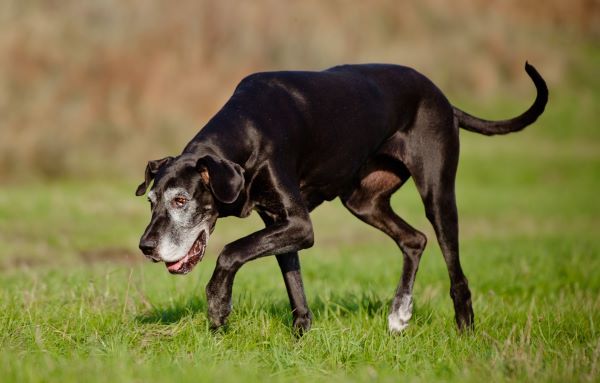
Cancer tends to occur more frequently during the late stages of dogs’ lives, as it does for humans. This increased susceptibility is thought to result from the cumulative effects of aging, which include cellular mutations and a weakening of the immune system.
Additionally, the longer a dog lives, the longer it is potentially exposed to environmental carcinogens and the higher the chance that a carcinogen could affect the genetic material in a cell and cause cancer. Thus, there are multiple reasons for the relationship between advancing age and cancer.
In dogs over 8 years old, cancer and tumours were the third most common health condition in 2023, according to Petsure claims data, and 60% of all cancer claims in 2023 were submitted for dogs aged eight years or older. The average cost for treatment was $1,514* and the highest treatment cost was $37,133*.
*Based on PetSure claims data, 2023 calendar year. Reimbursement for these claims under a pet insurance policy, would be subject to limits, such as annual benefit limits or sub-limits, benefit percentage, applicable waiting periods and any applicable excess. Cover is subject to the policy terms and conditions. You should consider the relevant Product Disclosure Statement or policy wording available from the relevant provider. Please note that values calculated are based on all claims for that condition and medically related conditions in each calendar year.
Hereditary causes
Studies show that hereditary risk factors play a role in the occurrence of cancer among pets. For example, among dogs, Golden Retrievers, Boxers, Bernese Mountain Dogs, and Rottweilers are generally more likely to develop cancer, and specific types of cancer, than other breeds.

This suggests that there are genetic characteristics that contribute to the higher rates of cancer among these animals. The increased cancer risk these breeds face may be linked to a combination of genes or a single gene. More research is needed to gain a better understanding of which genetic factors are involved.
PetSure data from 2023 revealed the top five breeds of dogs that claimed for cancer:
Environmental causes

Research shows that many cancers in humans are related to risk factors in the environment. Because they live in the same environment as their owners, dogs are exposed to many of the same environmental risks as humans; therefore, it is likely that these same risk factors play a major role in the development of cancers in dogs.
Known carcinogens that may directly contribute to the development of cancer in dogs include ultraviolet radiation from long exposure to the sun, second-hand tobacco smoke, a variety of herbicides, insecticides, and pesticides commonly used in agriculture, and the air pollution and smog common in many urban areas. Nickel, uranium, benzidine, benzene, radon, vinyl chloride, cadmium, and asbestos are all common substances that have been identified as carcinogens.
Exposure to UV radiation from the sun is a primary contributing factor in skin cancers, especially for squamous cell carcinoma and melanoma. Dogs, like humans, have skin as their largest organ, which can make them susceptible to skin cancer. Also, exposure to certain chemicals may increase the risk of developing skin cancer in dogs.
Just as humans differ in their response to carcinogens, so do dogs. Each dog is an individual and may have higher or lower sensitivity to various risk factors. It is not possible to reliably establish whether a high rate of cancer in a particular family of dogs is due to risk factors in the environment, hereditary factors, or to chance.
Early warning signs of cancer in dogs
Early detection of cancer is important, especially for older dogs. The signs of cancer in dogs vary depending on the affected body part and advancement (stage) of the disease.
Some signs of cancer in dogs may include:
Skin: Lumps, bumps, wounds, ulceration, scabs, sores that don’t heal or swelling that persists or increases in size.
Gastrointestinal signs: Vomiting, diarrhoea, blood in stool and/or constipation.
Systemic changes: Lethargy, loss of stamina, weight loss, changes in appetite, persistent bleeding from any body opening, swollen lymph nodes, breathing changes or difficulty breathing .
Neurological/orthopaedic/musculoskeletal signs: Changes in ambulation, activity, incoordination, persistent lameness, signs of pain, swelling, vision loss or changes, or seizures.
Reproductive/urinary: Changes in urination frequency or volume, mammary swelling or ulceration, testicular swelling, vaginal/penile discharge, difficulty urinating or defecating.
Oral signs: Drooling, difficulty eating or swallowing, bad breath, tooth loss, or masses in the mouth.
Diagnosis of cancer in dogs
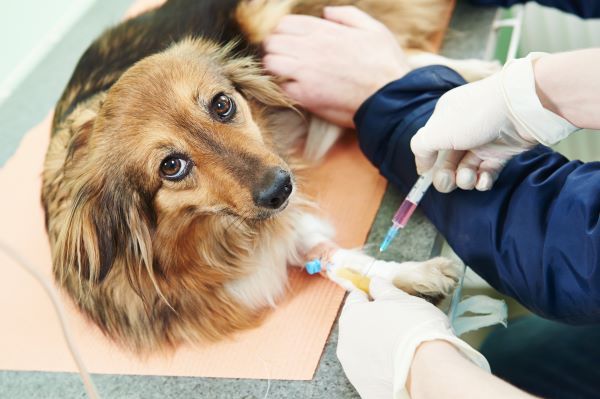
Diagnosing cancer in dogs involves comprehensive clinical examination and various diagnostic tools like x-rays, ultrasound, magnetic resonance imaging (MRI), computed tomography (CT) scans, blood tests, and biopsies. These tools can help your pet’s veterinary team detect cancer at an early stage.
Screening even when there is no sign of cancer is crucial because earlier cancer is detected, the better the treatment outcome is likely to be.
Treatment of cancer in dogs
Treatment for cancer varies based on cancer characteristics (type, grade, stage), patient factors, and concurrent health issues. It often involves a combination of therapies like surgery, chemotherapy, or other drugs alongside radiation. In cases where a cure isn’t possible, palliative care provides pain management and focuses on enhancing the dog’s quality of life.
Surgery

Surgery is considered the cornerstone for treating most cancer and tumours in dogs. It is one of the oldest forms of treatment and often the most effective one. Commonly used for localised tumours, particularly solid ones such as mast cell tumours and soft tissue sarcoma, the main goal is usually to remove all the cancerous cells in the animal’s body.
Sometimes, if the cancer is detected early – before it grows too large or spreads to other parts of the body – surgery can completely eradicate the cancer. If the cancer has spread to more than one location (metastasized), then surgery alone is not as likely to be an effective treatment.
Chemotherapy
Chemotherapy involves the use of drugs, delivered either by mouth or by injection, to kill or inhibit the growth of cancer cells. Typically used for widespread or inoperable cancers, chemotherapy may be administered orally or intravenously and can be combined with other treatments.
Chemotherapy alone usually cannot cure cancer in dogs; the most common treatment goal is to control the cancer and its spread. Some cancers do not respond to chemotherapy. How a cancer responds to a particular drug will depend on the type, size, rate of growth and spread, and location.
Radiation therapy
High-energy radiation works as a treatment for cancer because it kills cells that divide rapidly or damages the cancer cells so severely that they cannot divide and grow.
Radiation therapy is often used as a part of a combination treatment program, in addition to surgery or chemotherapy or both. Used for localised tumours when complete surgical removal isn’t possible, it aims to shrink tumours, alleviate pain, or slow cancer progression, and is commonly used to treat nasal and neck tumours and specific brain cancers.
Immunotherapy
This approach stimulates the dog’s immune system to recognise and attack cancer cells. It can be effective for certain cancers like melanoma and lymphoma, canine melanoma vaccine is an example of available immune therapy.
Targeted therapies
These drugs specifically target genetic or molecular abnormalities of cancer cells. Used for specific cancer types such as mast cell tumours, drugs like toceranib or phosphate are examples of targeted therapy for canine cancer.
Managing a dog with cancer
Nursing and nurturing a dog with cancer can be a challenging task. Pet patients undergoing cancer treatment may experience similar side effects to humans, for example, gastrointestinal issues like vomiting, diarrhoea and loss of appetite.
You will most likely have several responsibilities, such as:
- Administering cancer medications at home under strict guidelines in a timely and precise manner.
- Recognising signs of acute or chronic pain and/or any discomfort during the treatment process and notifying your vet when necessary.
- Trying to maintain your pet’s normal diet while your dog experiences loss of appetite. (If your dog is suffering from gastrointestinal side effects of chemotherapy, your vet may recommend an easily digestible diet and not introducing any new foods.)
- Prioritising your dog’s quality of life by creating a safe and loving environment where they can get plenty of rest.
Preventative measures against cancer in dogs
While prevention isn’t always possible, pet owners can take steps to minimise the risk of pet cancer:
Regular veterinary check-ups
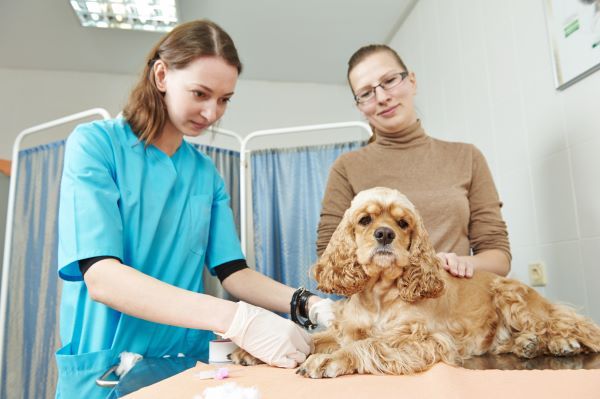
Visit your vet twice a year for wellness exams. Regular veterinary check-ups are also essential for early detection and treatment of suspicious skin lesions, as early intervention can significantly improve outcomes for dogs diagnosed with skin cancer.
Lifestyle adjustments
Keep your pet at a healthy weight, with regular exercise and a nutritional diet. Providing your pet with a premium, balanced and nutritional diet supports a healthy immune system and weight, which can potentially lower the risk of certain cancers. Regular exercise helps maintain a healthy weight and strengthens the immune system.
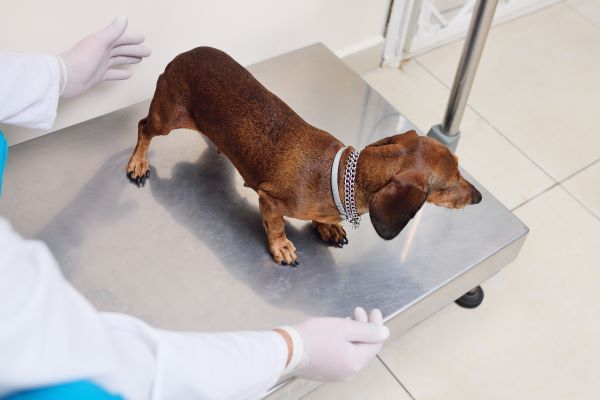
Owners can proactively protect their dogs from harmful UV rays by providing shaded areas outdoors and limiting sun exposure during peak hours, typically between 10am and 2pm. The areas that are most likely to develop skin cancer are those with little or no hair or those that do not have pigmentation (colour). For dogs, the abdomen is a vulnerable area.
Pet-safe sunscreen specifically formulated for dogs can offer additional protection against UV radiation. Apply sunscreen to areas of exposed skin, such as the nose, ears, belly, and any areas with thin or no fur.
Minimise your dog’s exposure to toxins
Reducing your pet’s exposure to environmental toxins or carcinogens like second-hand smoke, pesticides, herbicides, household cleaners, certain plants and human medications is crucial.
Monitor your dog’s health regularly
Be aware of any changes in your dog’s body, appetite, and urinary or bowel habits, all of which could be signs of possible illness. Also note changes in personality, demeanor, or activity levels, whether these occur suddenly or gradually over time.
Alert your vet to any change you find – while it might turn out to be nothing sinister, bringing it to your vet’s attention early on will increase the chance that a cancer is detected and treated at any early stage.
In summary
Cancer is a life-threatening condition, and the earlier it is detected and diagnosed, the easier it may be to treat and the better the outcome is likely to be. All dogs, especially older ones, should be considered at risk for cancer and receive a thorough physical examination by a vet annually. Blood and urine tests can lead to detection of cancer in dogs who don’t appear to be unwell.
Just as with humans, the earlier cancer is detected, the better the treatment outcome is likely to be. Veterinarians have successfully used surgery, chemotherapy, and radiation therapy to cure many dogs with cancer. Meanwhile, research is continuing and the prospects for better cancer treatments are strong.
Dogs undergoing cancer treatment require supportive care from their owner. These tasks include giving prescribed medications, learning to recognise the signs of pain, and providing the nutrition your dog requires.
Bow Wow Meow Pet Insurance can help protect you and your dog should an unexpected trip to the vet occur.
-
Find out more about our dog insurance options
-
Get an online pet insurance quote




